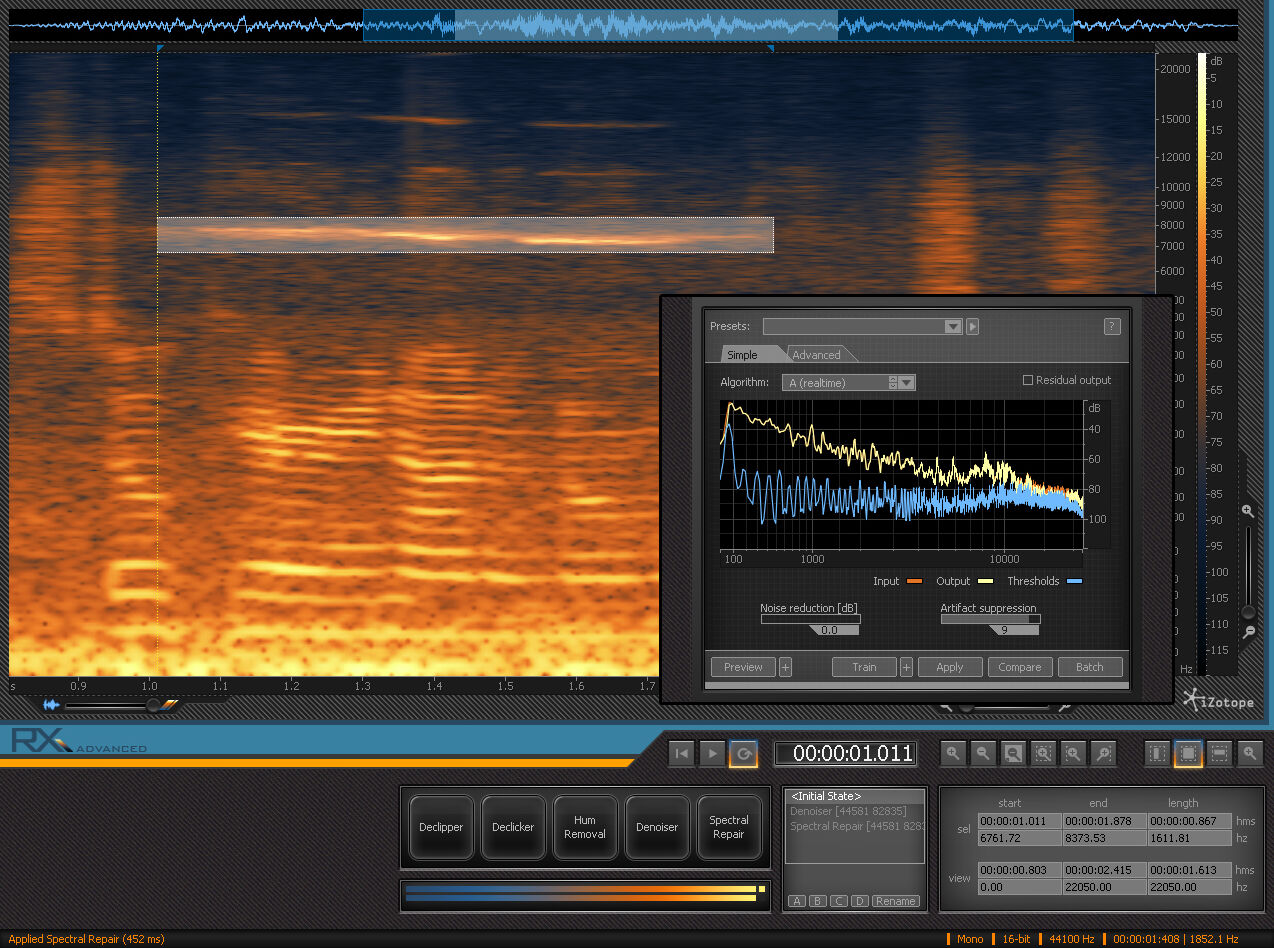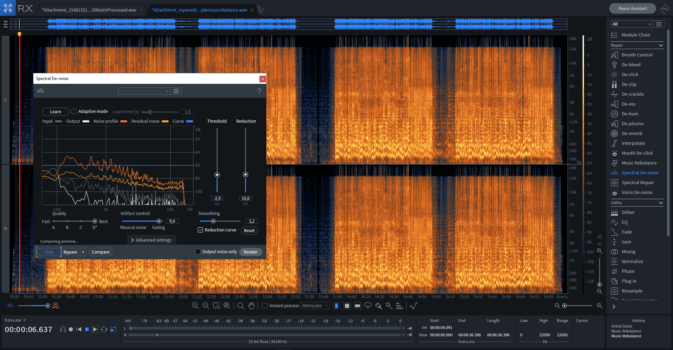


The latter is more difficult to master than the former. When recording voice, I use the Voice Denoise module otherwise Spectral Denoise is what you need. To get rid of annoying noise that will inevitably seep through at higher gain levels, I like to start my recordings with about ten seconds of silence so that RX 6 Advanced has no difficulty finding the best setting for its noise reduction algorithms. Of course, the easiest is to move away from the production floor and go somewhere else with a more even sounding background noise - if you can. Using a microphone that has been designed to capture only the sound coming in directly from the front may help as well. Avoiding clipping but have the interviewee clearly audible without a soft limiter that gracefully avoids transients from getting through will mean you’ll be constantly fiddling with the faders to keep everything in check. Let’s take an interview from a manufacturing site as an example. On these two, the soft limiter works great, but on some cheaper audio interfaces it may downgrade sound quality, so you should first try before turning it on. On A Sound Devices recorder such as the MixPre-6 I reviewed earlier or on an Apogee Duet iPad/Mac, you’ll find a soft limiter. A rule of thumb is to set gain as high as possible without any clipping occurring and then dialling back a little to have some headroom. If your gain levels are too low, any sort of post-processing you apply will add artefacts that become more annoying as you turn up the volume. To create a good sounding audio file, you’ll have to record at a high enough gain. What I’m going to discuss is how I optimise such recordings. Mixing is less of an issue when you’re recording an interview or a commentary to go with a documentary, for example. That’s not the audio post production I’m covering here as those also require careful mixing. You might also be preparing a soundtrack CD from multiple recordings. If you’re recording a classical concert, you may have more than two mics set up to record audio from different parts of an orchestra. To be honest, my workflow will only work well with one or two microphones. The two apps I use for this are the iZotope RX 6 Advanced Audio Editor and the Ozone 8 mastering suite. If you are recording audio separately when shooting a documentary, interview or movie, chances are you’ll not only have to synchronise it with the footage but also edit your audio to make it sound perfect in post production.


 0 kommentar(er)
0 kommentar(er)
